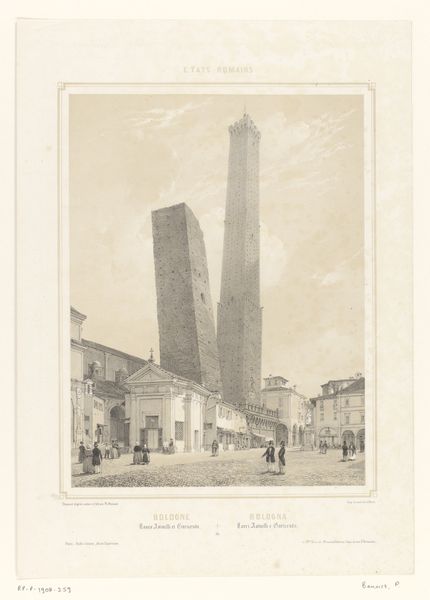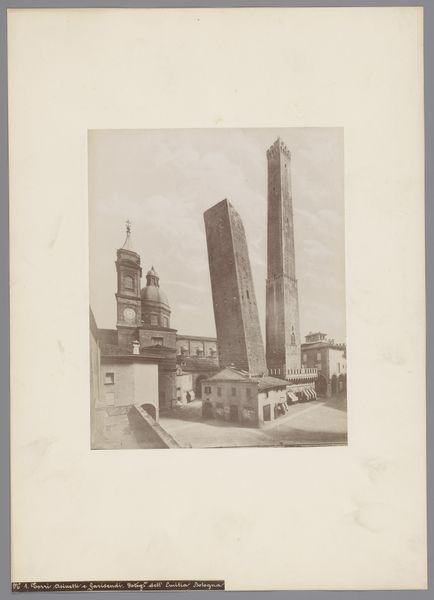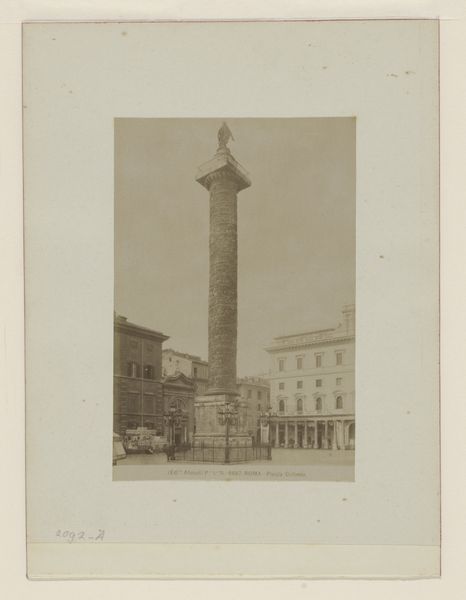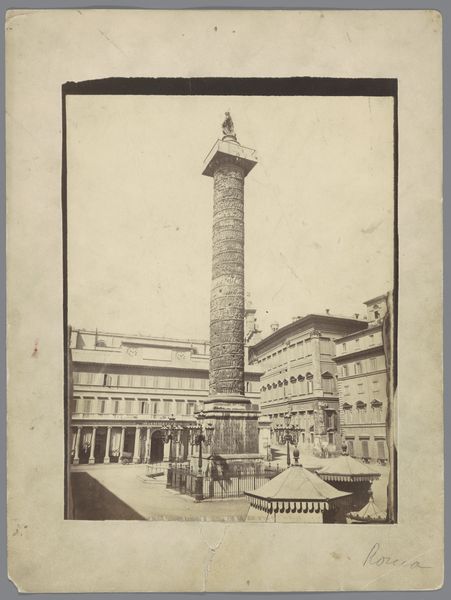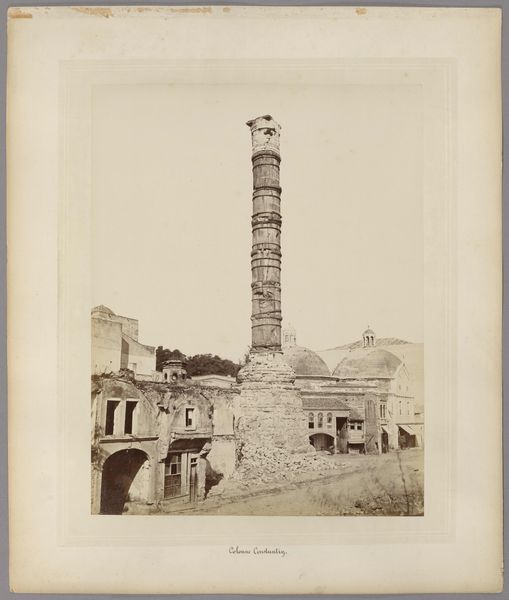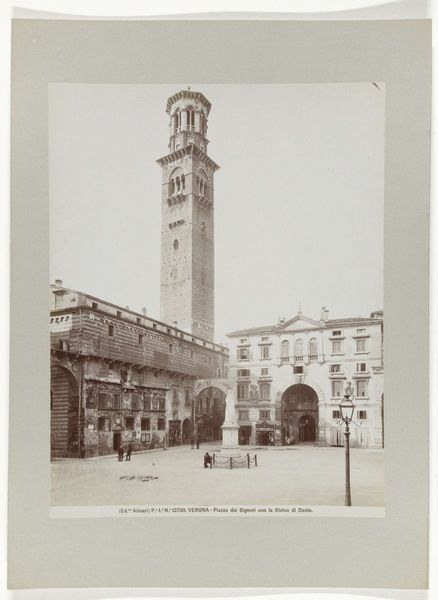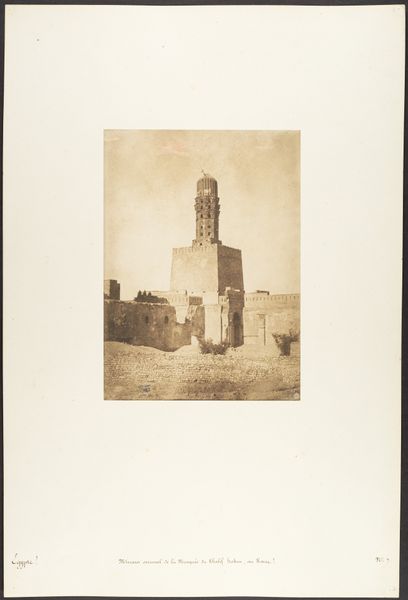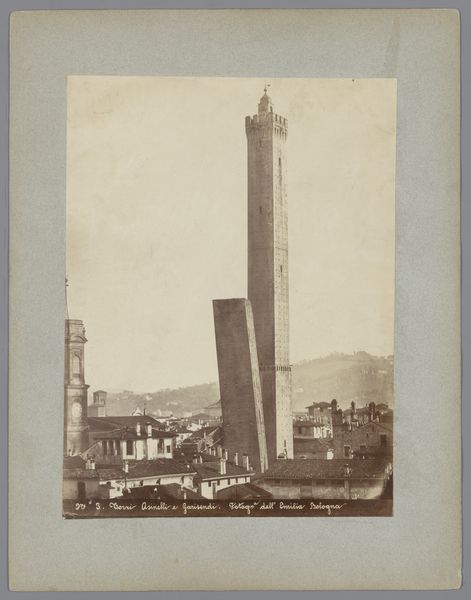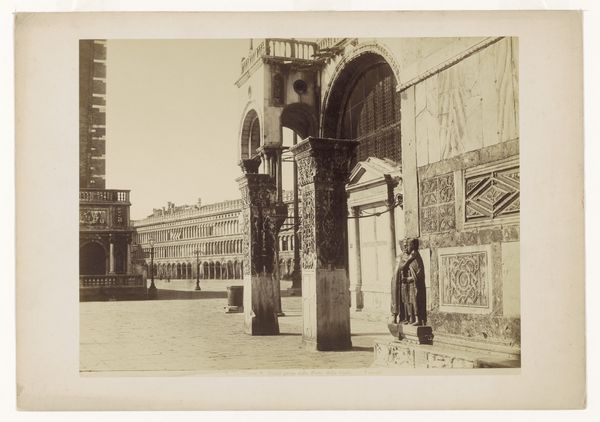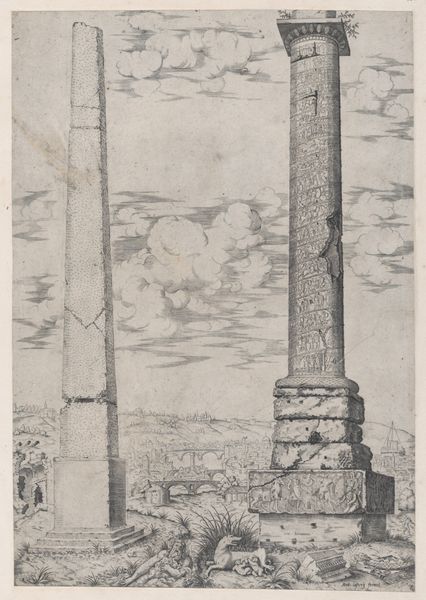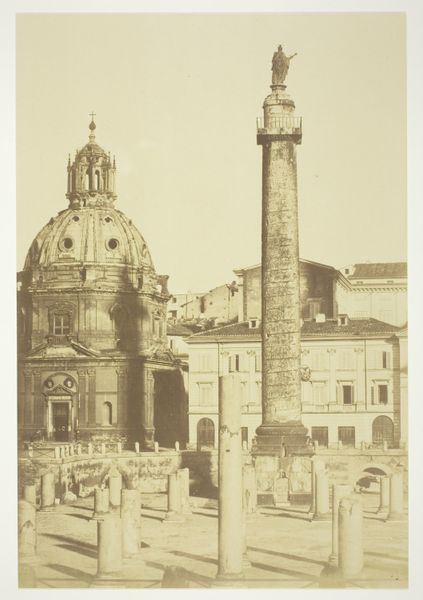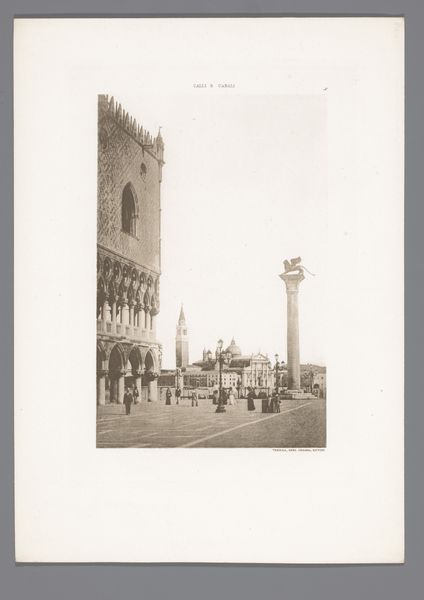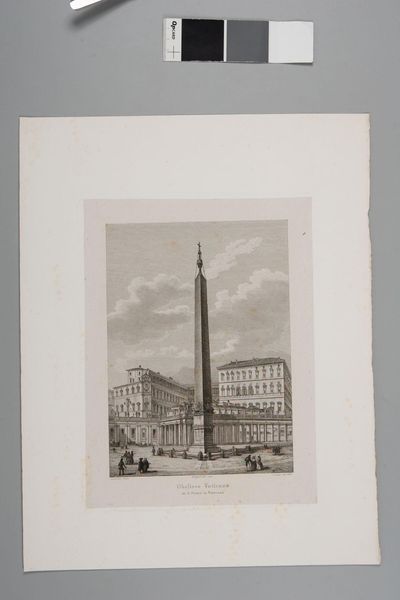
Bologna: The Asinelli and Garisenda towers, plate 40 from Italie Monumentale et Pittoresque c. 1848
0:00
0:00
drawing, lithograph, print, paper
#
drawing
#
neoclacissism
#
lithograph
# print
#
landscape
#
paper
#
cityscape
#
history-painting
#
italian-renaissance
Dimensions: 403 × 294 mm (image/tint stone); 565 × 397 mm (sheet)
Copyright: Public Domain
Curator: Looking at this print, my immediate thought goes to the inherent instability, that precarious tilt. Editor: Indeed. What we have here is Nicolas Chapuy's "Bologna: The Asinelli and Garisenda towers, plate 40 from Italie Monumentale et Pittoresque," a lithograph from around 1848. Curator: I'm struck by the production. It’s a lithograph, allowing for those subtle gradations of tone, almost mimicking the way sunlight renders the stone surfaces. What paper was typically available at this time for such a print run, I wonder? Was there regional variation? Editor: These towers have become enduring symbols of Bologna. Their story is closely tied to the families who commissioned them in the 12th century—expressions of wealth and power transformed into these monumental architectural statements. Curator: Expressions, yes, but let's consider the labor that built these towers. The physical exertion, the sourcing of materials, the craft of the masons—we often forget that architecture is fundamentally rooted in human effort and exploitation. Editor: That’s a valid point. And Chapuy’s print participates in a larger tradition of representing these sites as emblems of civic identity, designed to cultivate local pride and attract tourism to support Bologna's economy. Curator: And how were prints such as this one circulated and consumed? Was it meant to adorn the homes of the burgeoning middle class, reinforcing ideas of Italian heritage? What stories did these prints whisper to the individuals who encountered them daily? Editor: Precisely. And furthermore, the very act of selecting Bologna as a subject within this "Italie Monumentale et Pittoresque" situates it within a political and cultural landscape—a way of asserting a unified Italian identity, decades before formal unification. Curator: It prompts questions about how this print reinforced class structures too. The towers stand, representing both pride and also the labor and resources necessary to erect them—available mostly to elite classes. Editor: The image does seem staged, with these groups elegantly strolling through the plaza in front of the leaning towers. It highlights an urbanity accessible only to specific demographics, perhaps papering over socio-economic realities to create a vision for others who desired that lifestyle. Curator: In short, looking at the materiality, the craft, helps us to start peeling back the layers of what Italy and Italian-ness stood for, and who profited in representing that idea for the populace. Editor: That intersection of material culture and historical narrative provides such rich insight, prompting us to reflect on how our perspectives today have been built atop the visions and manipulations of those who came before.
Comments
No comments
Be the first to comment and join the conversation on the ultimate creative platform.
